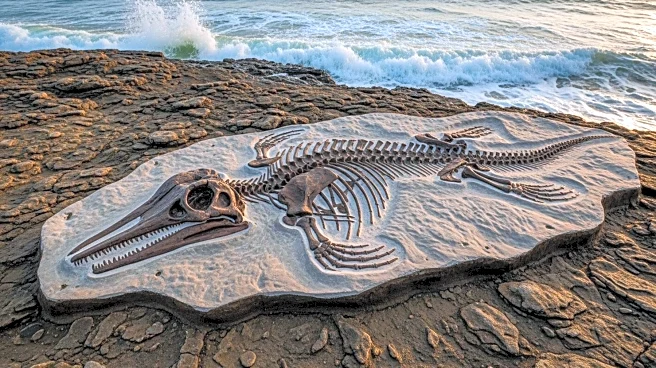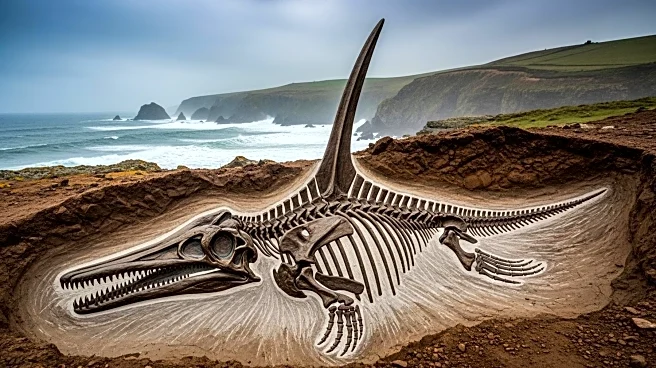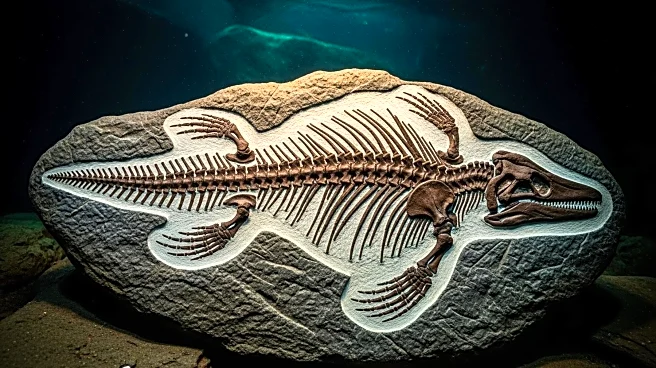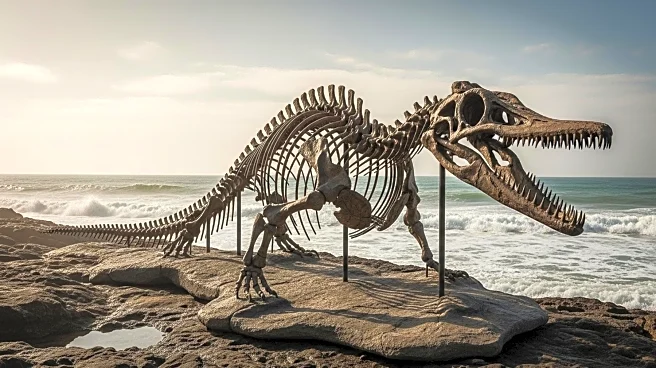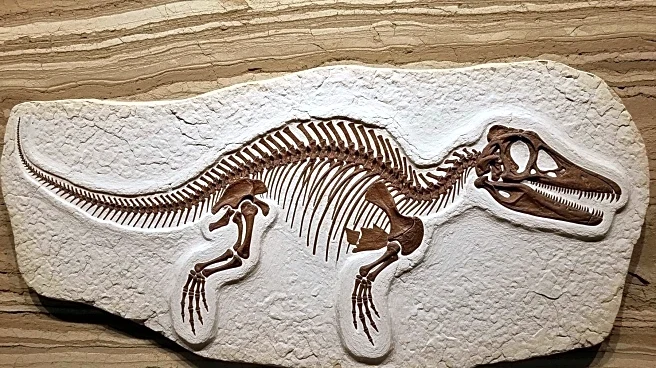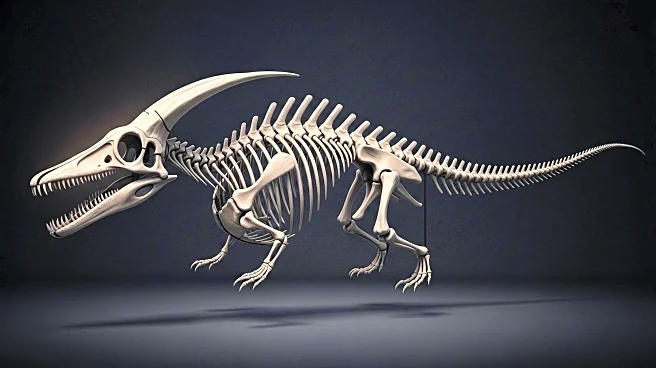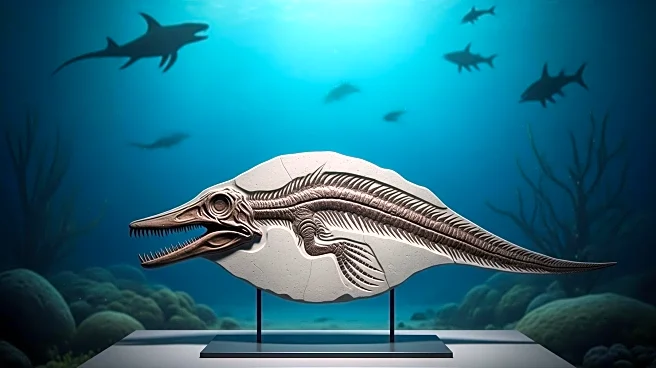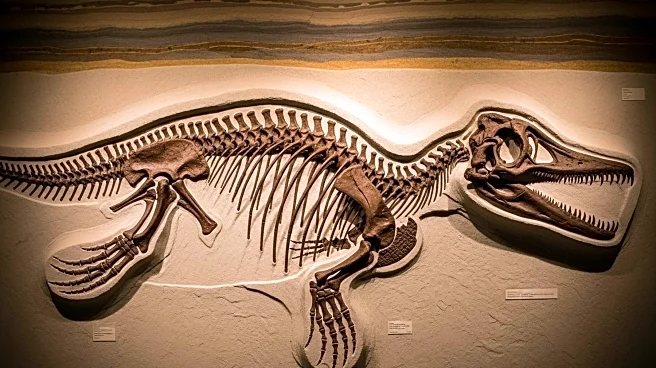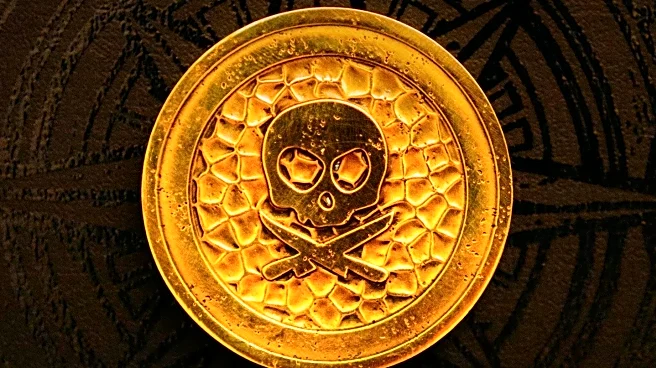What's Happening?
A near-complete skeleton of a new species of ichthyosaur, named Xiphodracon goldencapensis or the 'sword dragon of Dorset,' has been identified on the Jurassic coast of Dorset, UK. This dolphin-sized marine reptile, which lived approximately 185 million years ago, was discovered by fossil hunter Chris Moore in 2001 and later acquired by the Royal Ontario Museum in Canada. The species is unique due to its long sword-like snout and prong-like bone near its nostril. The skull features a large eye socket and marks suggesting it may have been killed by a larger ichthyosaur. The discovery fills a gap in ichthyosaur evolution, as fossils from this period are rare.
Why It's Important?
The identification of Xiphodracon goldencapensis provides significant insights into the evolution of ichthyosaurs, a group of marine reptiles that once dominated the oceans. This discovery is crucial for paleontologists as it adds to the understanding of marine life during the Mesozoic era, a time when ichthyosaurs were rare. The unique features of the 'sword dragon' contribute to the knowledge of ichthyosaur diversity and their ecological roles. The discovery also highlights the importance of fossil hunting and analysis in uncovering new species, which can lead to a better understanding of prehistoric life and evolutionary processes.
What's Next?
Further analysis of the 'sword dragon' may reveal more about its lifestyle, diet, and interactions with other marine species. Researchers may continue to study the fossil to understand the causes of its injuries and death, which could provide insights into the predatory dynamics of the time. The discovery may also encourage more fossil hunting along the Jurassic Coast, potentially leading to the identification of additional new species. Museums and scientific institutions may collaborate to display the fossil and educate the public about ichthyosaurs and their significance in marine history.
Beyond the Headlines
The discovery of the 'sword dragon' raises questions about the ethical considerations of fossil acquisition and the role of museums in preserving and studying ancient specimens. It also highlights the cultural importance of fossil hunting in regions like Dorset, where historical figures like Mary Anning made significant contributions to paleontology. The long-term implications of such discoveries may influence conservation efforts and the protection of fossil-rich areas, ensuring that future generations can continue to explore and learn from these ancient remains.

